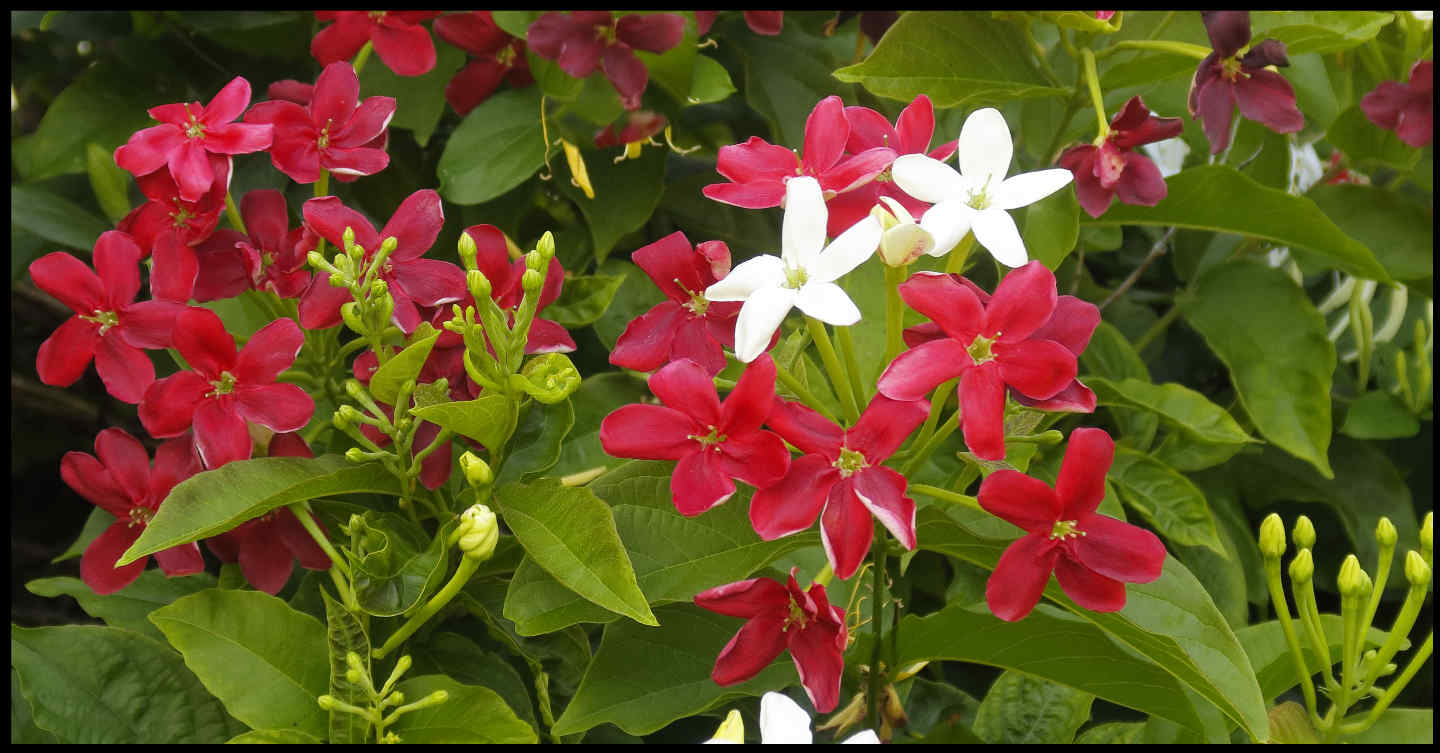Combretaceae.
Plants of the World Online accepts 10 genera of trees, shrubs and climbers.
They have scales, simple and multicellular hairs and glands with or without a stalk.
The evergreen or deciduous leaves are opposite or alternate and rarely whorled.
On a petiole, they are simple with a smooth or occasionally shallowly lobed edge.
Terminal or axillary inflorescences are a spike or raceme and rarely panicles.
Racemes have stalked flowers along a midrib with the lower ones opening first.
In spikes the flowers have no stalk and panicles are branched.
Most have bisexual flowers but male flowers may be present in the same inflorescence.
The calyx is divided into 2 sections.
These are referred to as the upper and lower receptacle, hypanthium or calyx tube.
Another way, which I will use is a lower receptacle and an upper calyx tube.
The short receptacle lies around, and is fused to, the ovary.
The long or short calyx tube has 4 or 5 (0, 6 to 8) typically small lobes on the rim.
The corolla has 4 or 5 (0) large or small petals inserted near the mouth of the calyx tube.
There are twice as many stamens as sepals or petals – 4 or 5 or 8 to 10.
They are inserted onto the calyx tube in 2 whorls.
The dorsifixed anthers, opening through longitudinal slits usually extend past the top of the calyx tube.
There may be a smooth or hairy nectary disk.
The inferior ovary is fused to the receptacle
The 2 (to 6) ovules hang down from the top of the single locule.
The usually free style has a simple or lobed stigma.
The mostly indehiscent fruit, on a stalk or not can be dry or fleshy.
Variously shaped they may be angled, ridged or winged.
Most are drupes (fleshy with 1 seed in a hard coat) with some samaras (dry, indehiscent with wings).
J.F.


